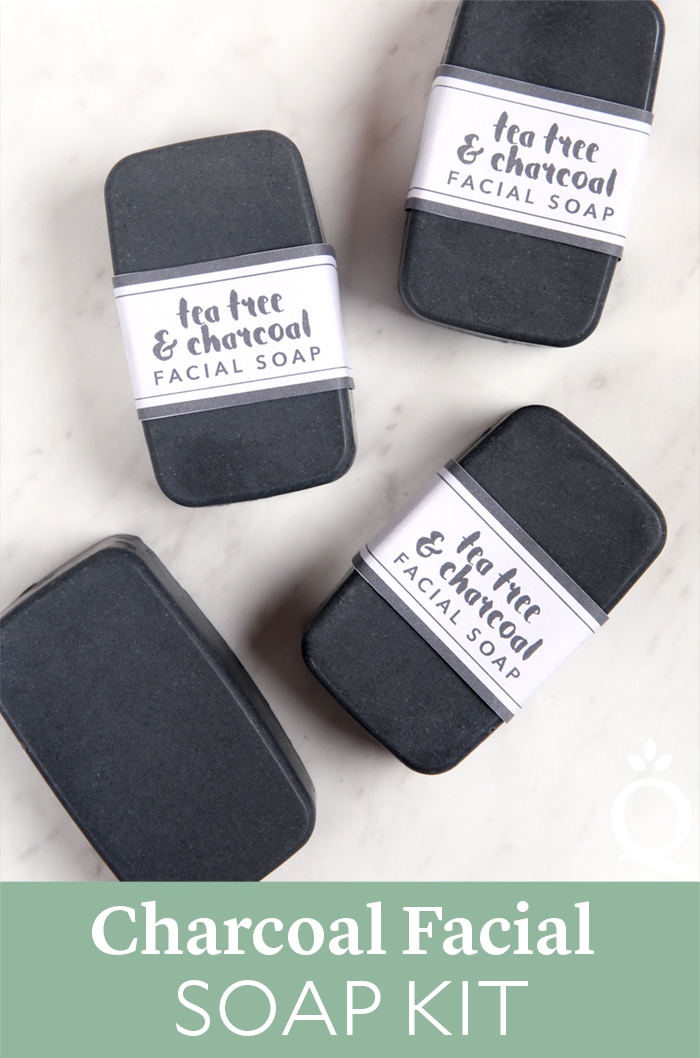
The Charcoal Facial Soap is one of our most popular recipes to date. We decided to make it into a kit so it’s even easier to try. The Charcoal Facial Soap Kit comes with ingredients like tamanu oil, activated charcoal, and tea tree essential oil. The ingredients were specifically chosen for oily and combination skin.
The kit also comes with the new 6 Cavity Silicone Rectangle Mold, easy-to-follow printed instructions, and printed labels. It’s a great project for beginners and advanced soapers alike. To see a larger batch of the recipe in action, check out the How to Make Charcoal Facial Soap video on Soap Queen TV.
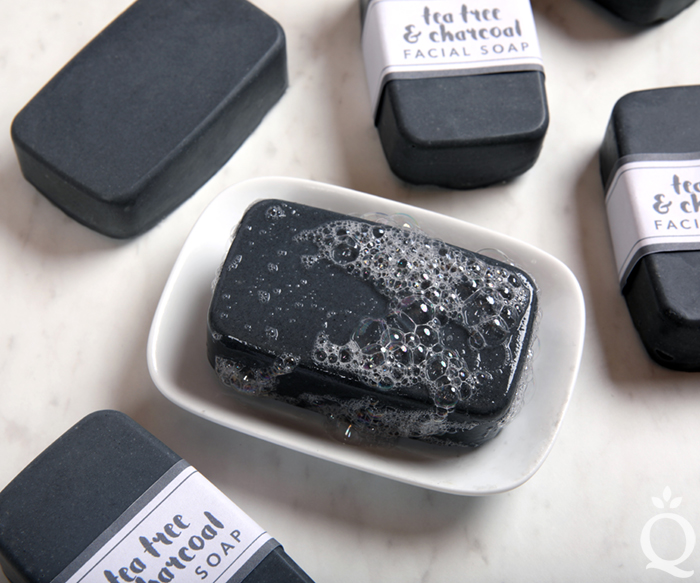
This recipe benefits from a slightly high soaping temperature (120-130° F) and being placed on a heating pad (we like this one) once poured into the mold. The hotter temperatures and 15% water discount helps the soap harden faster so it’s ready to unmold in just a few days.
What You Need:
*All items are included in the Charcoal Facial Soap Kit
6 Cavity Silicone Rectangle Mold
0.7 oz. Castor Oil (5%)
3.5 oz. Coconut Oil (25.4%)
3.5 oz. Palm Oil (25.4%)
5.6 oz. Olive Oil (40.6%)
0.5 oz. Tamanu Oil (3.6%)
2 oz. Sodium Hydroxide Lye
4 oz. Distilled Water (15% water discount)
0.6 oz. Tea Tree Essential Oil
2 tsp. Activated Charcoal
1 tsp. Sodium Lactate
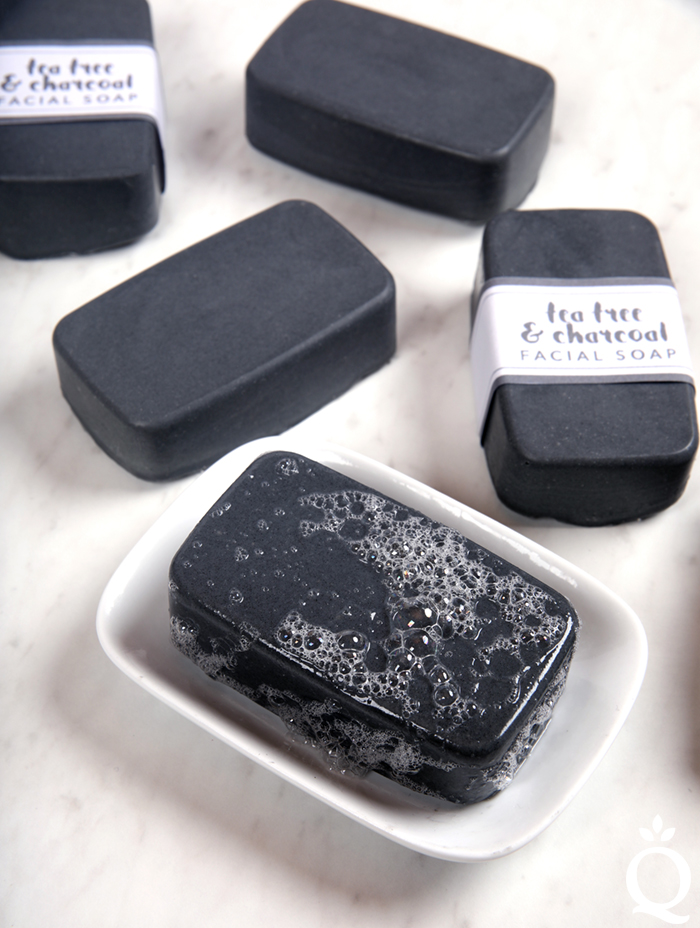
- 6 Cavity Silicone Rectangle Mold
- 0.7 oz. Castor Oil (5%)
- 3.5 oz. Coconut Oil (25.4%)
- 3.5 oz. Palm Oil (25.4%)
- 5.6 oz. Olive Oil (40.6%)
- 0.5 oz. Tamanu Oil (3.6%)
- 2 oz. Sodium Hydroxide Lye
- 4 oz. Distilled Water (15% water discount)
- 0.6 oz. Tea Tree Essential Oil
- 2 tsp. Activated Charcoal
- 1 tsp. Sodium Lactate
- Slowly and carefully add 2 oz. of lye to 4 oz. of water and gently stir until the lye has fully dissolved and the liquid is clear. Set aside to cool to about 120-130 degrees F. If you’d like a harder bar of soap that releases faster from the mold, you can add sodium lactate to the cooled lye water. Use 1 teaspoon of sodium lactate per pound of oils in the recipe. For this recipe, add 1 teaspoon sodium lactate.
- Completely melt the bags of coconut oil and palm oil in the microwave with the caps on. Weigh 3.5 oz. of coconut oil, 3.5 oz. of palm oil, 0.7 oz. of castor oil, 0.5 oz. of tamanu oil, and 5.6 oz. of olive oil into a medium glass container. Set aside until it reaches 120-130 degrees F.
- With gloves and goggles on, add the lye water to the oils. Pulse the blender on and off to mix. Continue to pulse and stir for about 1-2 minutes.
- Once the soap is a pudding-like texture and the oils are fully mixed, add 0.6 oz. of essential oil and 2 tsp. of charcoal. Whisk until combined.
- Pour the soap into each cavity of the mold. Tap the mold on the counter to get rid of bubbles. Place the mold onto a heating pad set to medium for 2-3 hours. Turn the heating pad off and allow the soap to harden for 2-4 days.
- Pull two sides of the cavity away from the bars of soap. If the cavity releases easily, pull the other two sides away and gently press the soap out from the bottom. If the soap sticks to the mold, let it harden for another day and try again.
- Allow the soap to cure on a well-ventilated shelf for 4-6 weeks to create firm, long-lasting bars. Enjoy.

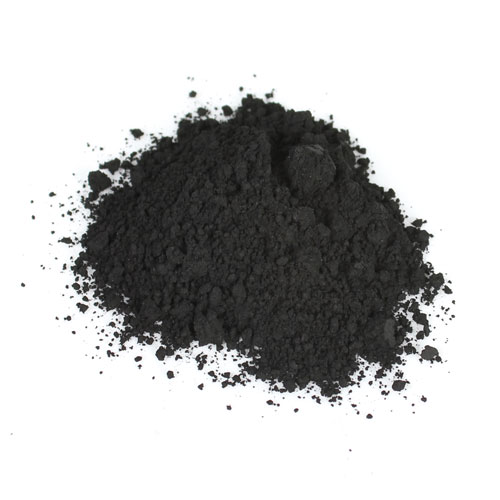


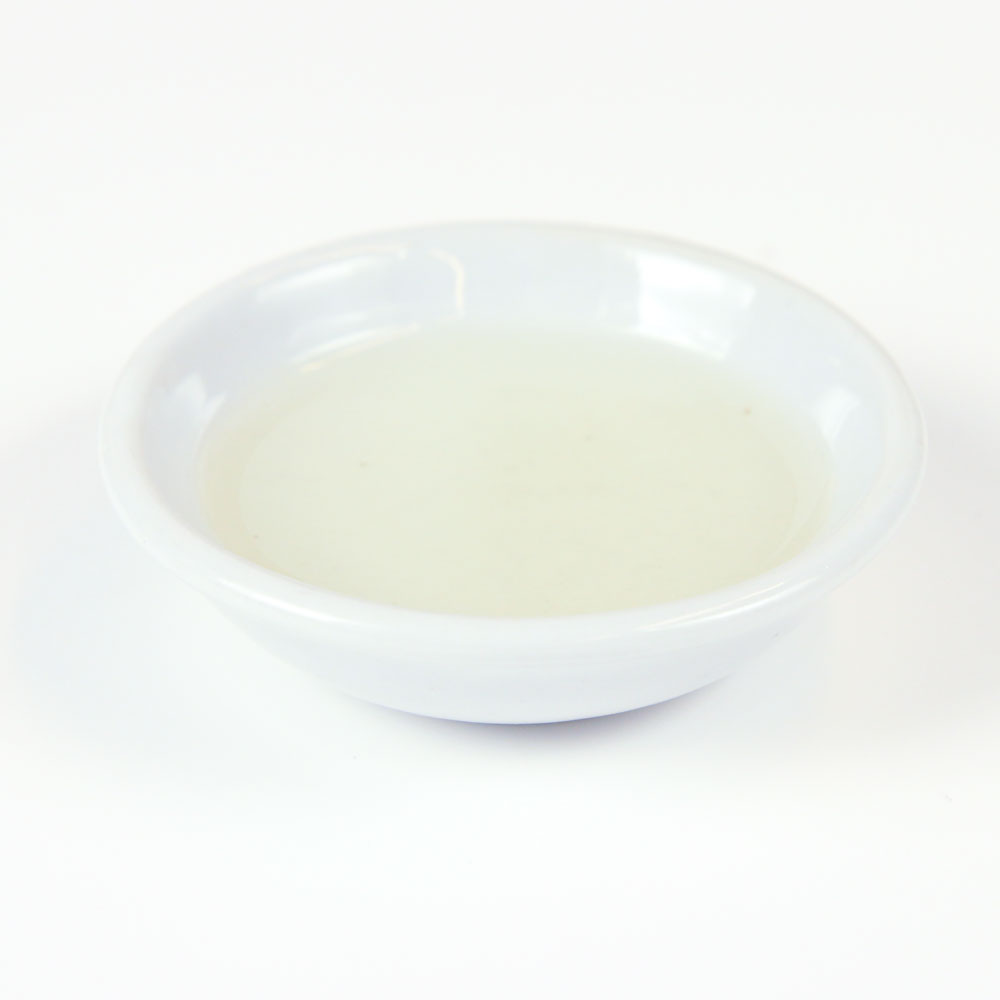
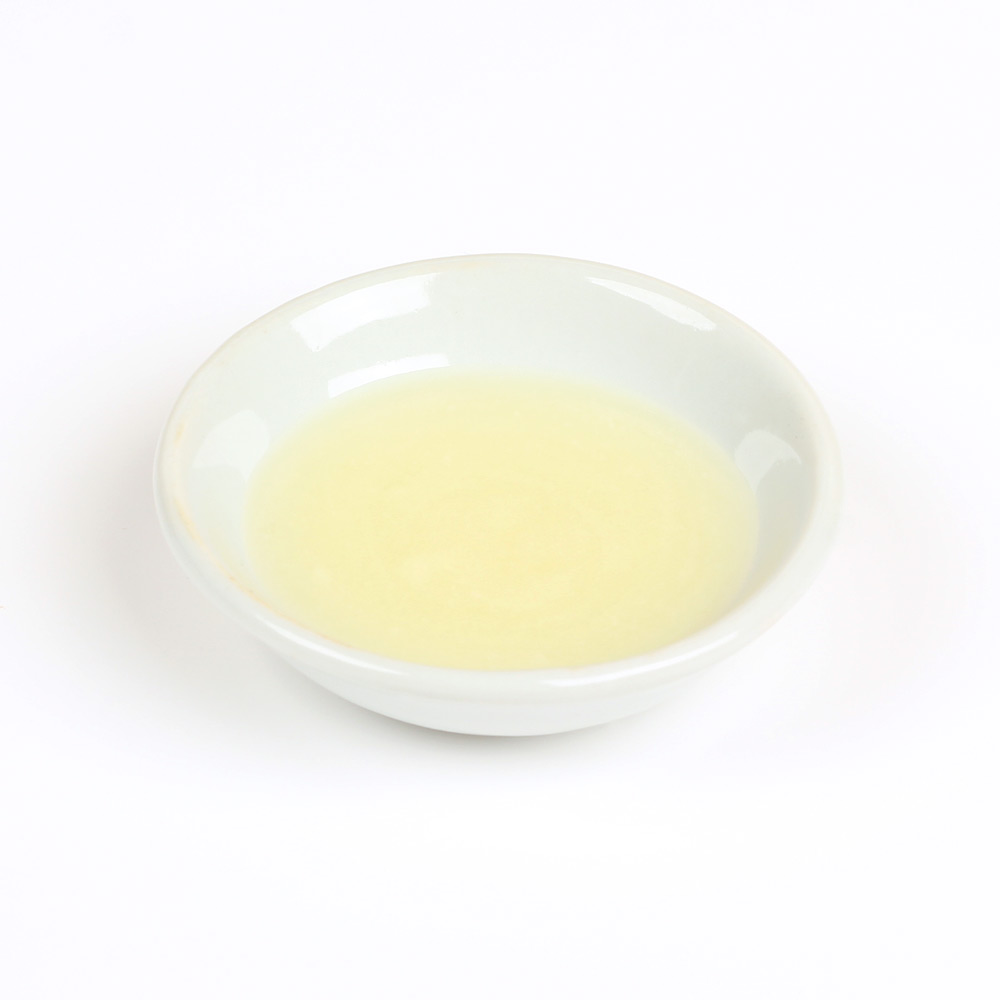
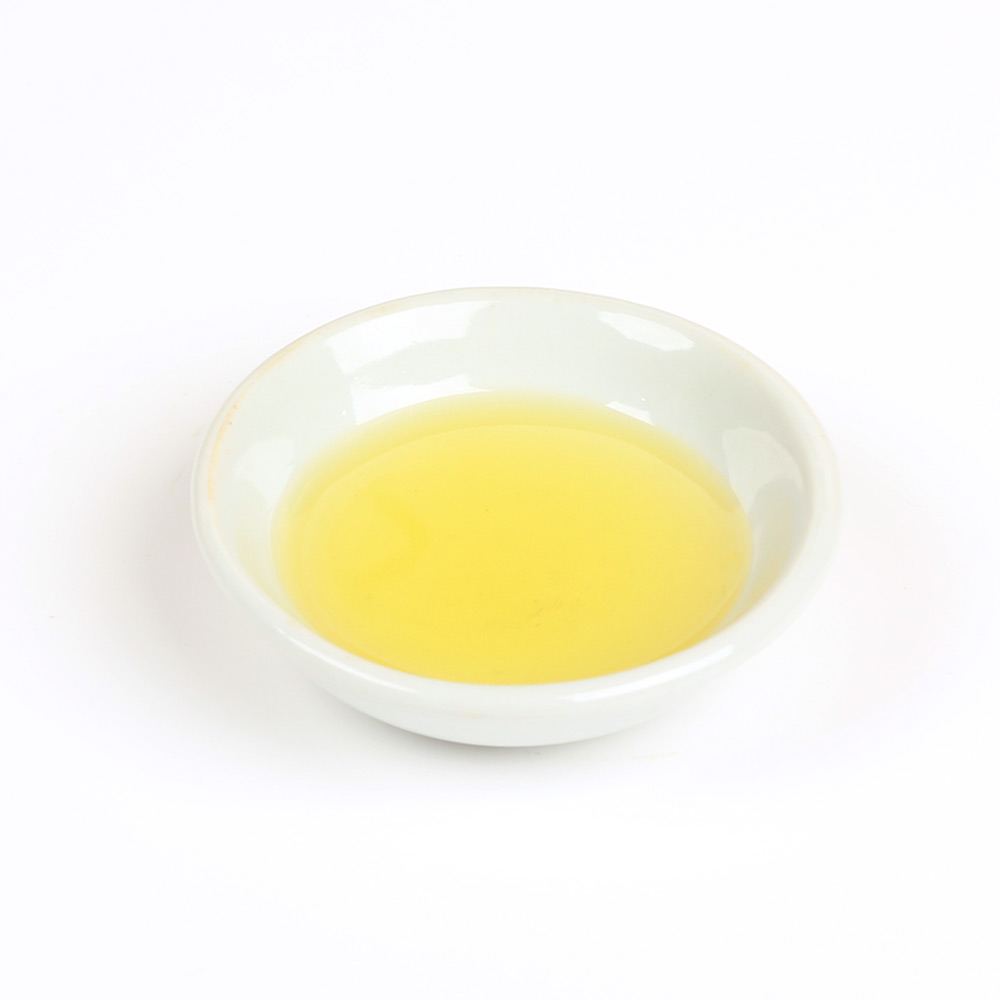
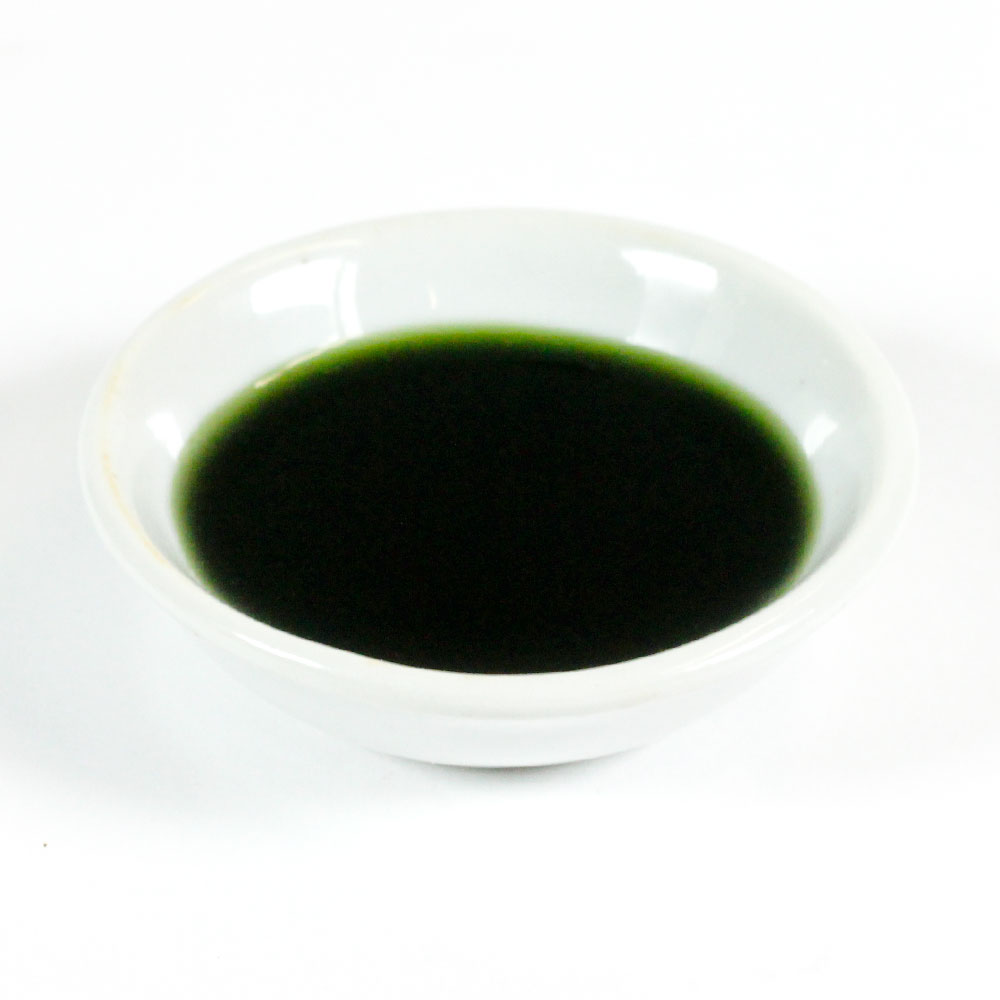
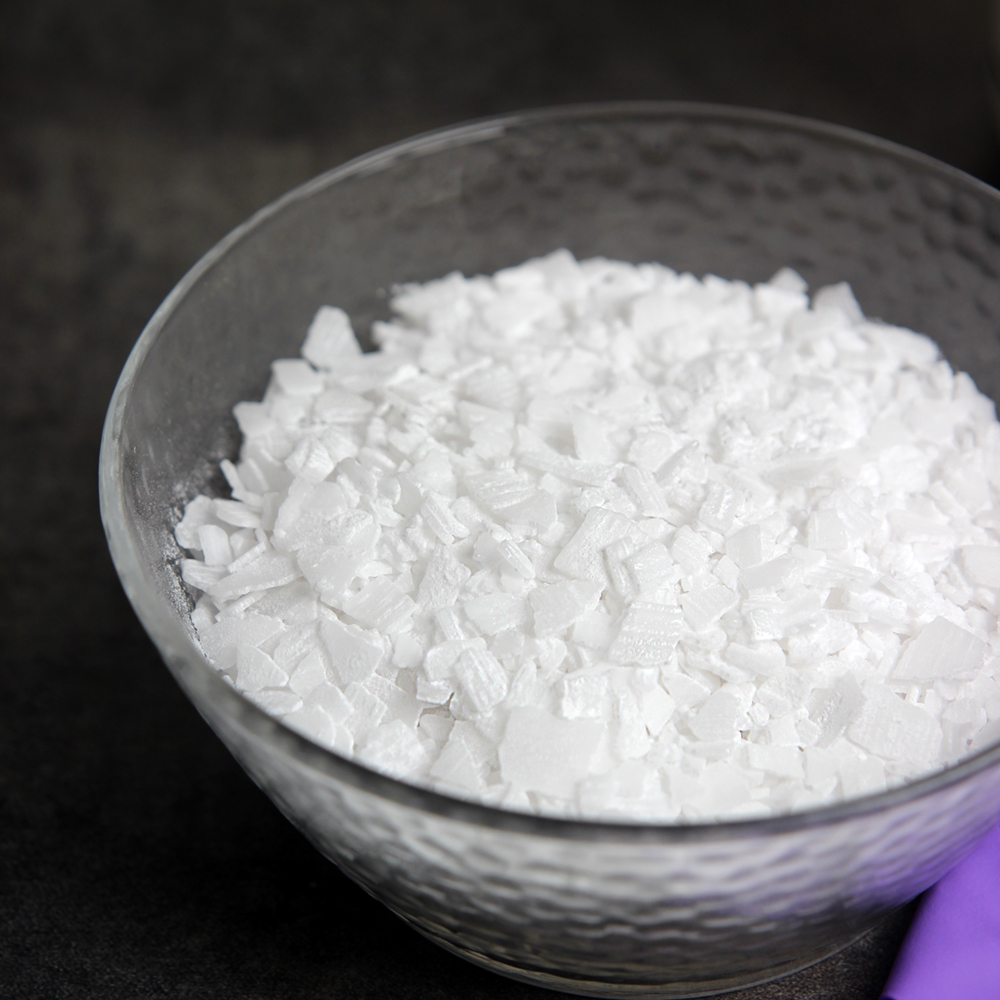
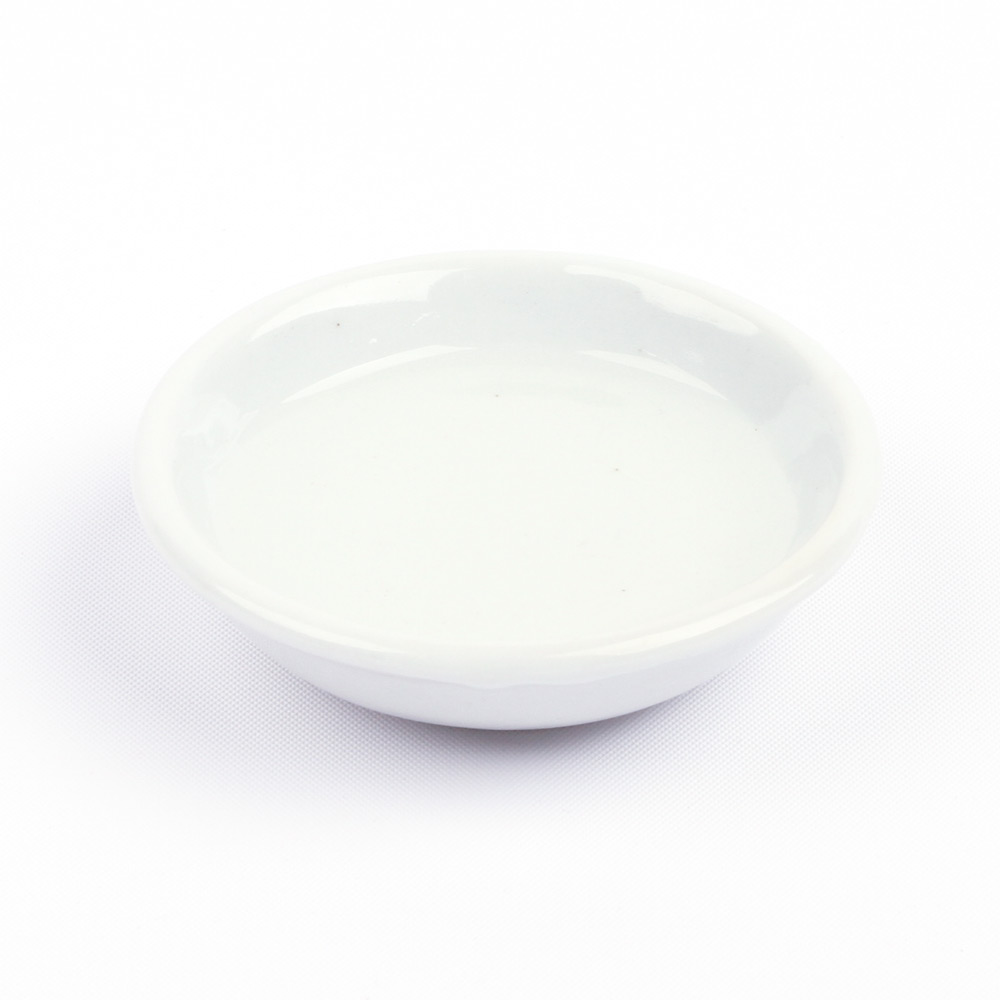
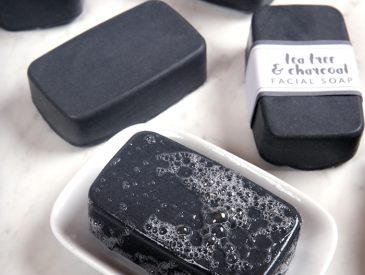

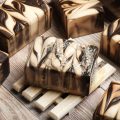

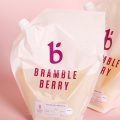
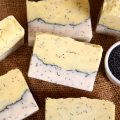
In this , you never said anything about char Coal?
Can I use aloe vera juice instead of water?
You would want to use Aloe Vera Liquid instead of Juice as typically those have extra ingredients added that can change how your trace happens.
Can I make this in a regular oblong mold and cut into bars?
Yes you can make this recipe in a loaf mold instead of the cavity mold and cut them into bars.
Can I omit the sodium lactate? If so, how should I compensate for it?
Sodium lactate is completely optional – it is used to harden the soap so that it can be unmolded more quickly. It does not affect cure time at all. There isn’t anything that can compensate for it, so whether or not you decide to use it is totally up to you.
Is it possible to use a Hydrosol instead of Distilled Water to create the Lye Water?
Thank you!
Hi Mari, it’s definitely possible to use a hydrosol as a full or partial replacement for your water, though it tends to be quite a bit more expensive than using distilled water.
Not sure if my comment/question posted. This may be a duplicate
I substituted Hazelnut Oil for the Tamanu Oil.
the Soap came out VERY soft. Have I ruined it or will it harden with age?
Thank you!
I tried this recipe – replacing Tamanu Oil with Hazelnut oil. The bars came out very soft. Will it get harder with time or have I ruined it?
If you used the same amount of oil the bars should still harden up over time. If they are still in the silicone mold it should help them harder up faster if you unmold them so they get more airflow.
Good day I am a beginner in soaping, kindly post basic soap making for this beginner, please?
Thank you for your kindness
We have a ton of great resources if you’re just getting started making soap. The Beginning Soaper Resource Roundup has information on everything from formulating recipes to adding color: http://www.soapqueen.com/bramble-berry-news/beginning-soaper-resource-roundup/
We also did a Back to Basics series with simple beginner recipes and tips. You can find that roundup here: https://www.soapqueen.com/bath-and-body-tutorials/back-to-basic-series-roundup-quiz/
We’re also here to help. If you have any questions, let us know.
Can I use a melt and pour base instead of lye for this recipe (tea tree and charcoal soap) and if so what would you recommend?
You can use melt and pour base for this recipe. The amount of charcoal and fragrance will remain the same. If you want the color to stay dark, use clear melt and pour base. You can find it here: https://www.brambleberry.com/SFIC-Pure-Melt-And-Pour-Soap-Base-P6628.aspx
Here is a similar recipe that you might like: https://www.soapqueen.com/bath-and-body-tutorials/melt-and-pour-soap/bee-pollen-melt-pour-soap-diy/
How much melt and pour base should we use for this recipe?
The mold we used holds 22.4 ounces of soap so you will want to use that much for the melt and pour.
Hello, do you know the PH of this soap? thanks
Cold process soap has a pH of 9-10. You can make sure it’s in that range a few ways, this post tells you how: https://www.soapqueen.com/bath-and-body-tutorials/tips-and-tricks/troubleshooting-lye-heavy-soap/
Is it possible to make this recipe without the palm oil?
Babassu oil can be used in place of palm oil: https://www.brambleberry.com/Babassu-Oil–P6807.aspx
You can also add a hard oil like cocoa butter up to 15% to add firmness like palm oil does. Coconut oil or tallow up to 33% work as well. Read more about common oils and what properties they add to soap here: http://www.soapqueen.com/bath-and-body-tutorials/tips-and-tricks/free-beginners-guide-to-soapmaking-common-soapmaking-oils/
This post on substituting oils has some great information too: http://www.soapqueen.com/bath-and-body-tutorials/tips-and-tricks/how-to-substitute-oil-in-cold-process-recipes/
wha do I need to change if I want to do this recipe in hot process instead of cold process soapp?
The recipe will stay the same, the only difference is you’ll add the essential oil and charcoal once the soap is done cooking. Then, spoon into your mold.
You’ll want to add less tea tree as well, as it’s not going to saponify like cold process does. You can use the rebatch option on the Fragrance Calculator to find out how much to add: http://www.brambleberry.com/Pages/Fragrance-Calculator.aspx
Can I add neem oil along w/ the tea tree oil for facial soap?
Yes, you can use neem in this recipe. We recommend it at 3-6% in the recipe: https://www.brambleberry.com/Neem-Oil-P6806.aspx
You can decrease the olive oil to account for the neem. Remember to run it through the Lye Calculator after any substitutions: https://www.brambleberry.com/Pages/Lye-Calculator.aspx
What is the super fat on this recipe?
This recipe is superfatted at 5%.
Superfatting Soap: An Explanation: http://www.soapqueen.com/bath-and-body-tutorials/cold-process-soap/superfatting-soap-an-explanation-2/
Sorry, I don’t get the purpose of the heating pad. Is it absolutely necessary? If so, is there an alternative, like placing in the oven or…..?
Thank you
I just love this site!!
You can place it in the oven. That’s what I do.
The heating pad forces gel phase. That helps the color look a bit more vibrant, helps prevent soda ash, and helps the bars unmold more quickly. Learn more about gel phase here: http://www.soapqueen.com/bath-and-body-tutorials/tips-and-tricks/gel-phase/
We do recommend it for this recipe. You can also cover the mold with a towel and keep it in a warm part of your house, or place it on top of a warm oven.
Learn more about how to insulate soap here: http://www.soapqueen.com/bath-and-body-tutorials/tips-and-tricks/when-to-insulate-handmade-soap/
can i replace tamanu oil with other oil sunflower oil
Tamanu oil has a unique texture, similar to neem or pumpkin seed oil. Those would be good substitutes for it. You may want to make a small test batch to see what you think.
Neem oil: https://www.brambleberry.com/Neem-Oil-P6806.aspx
Pumpkin seed oil: https://www.brambleberry.com/Pumpkin-Seed-Oil-P5894.aspx
Remember to run your recipe through the Lye Calculator after any substitutions: https://www.brambleberry.com/Pages/Lye-Calculator.aspx
This post on substituting oils in cold process soap has some great tips as well: http://www.soapqueen.com/bath-and-body-tutorials/tips-and-tricks/how-to-substitute-oil-in-cold-process-recipes/
Is it possible to just omit the tamanu oil all together and just use more of one of the other base oils ?
Yes, you can increase the olive oil. Remember to run your recipe through the Lye Calculator after any substitutions: https://www.brambleberry.com/Pages/Lye-Calculator.aspx